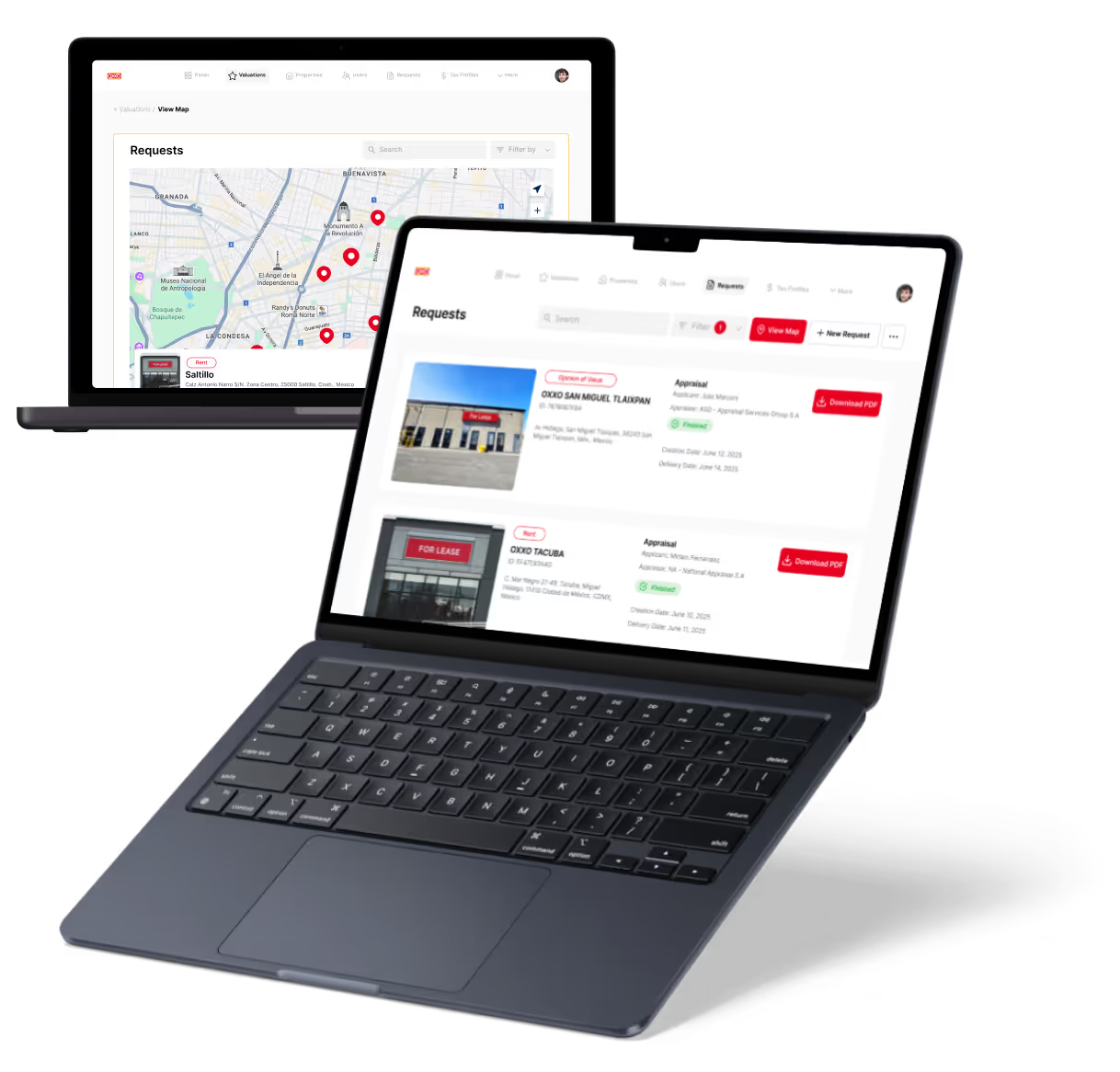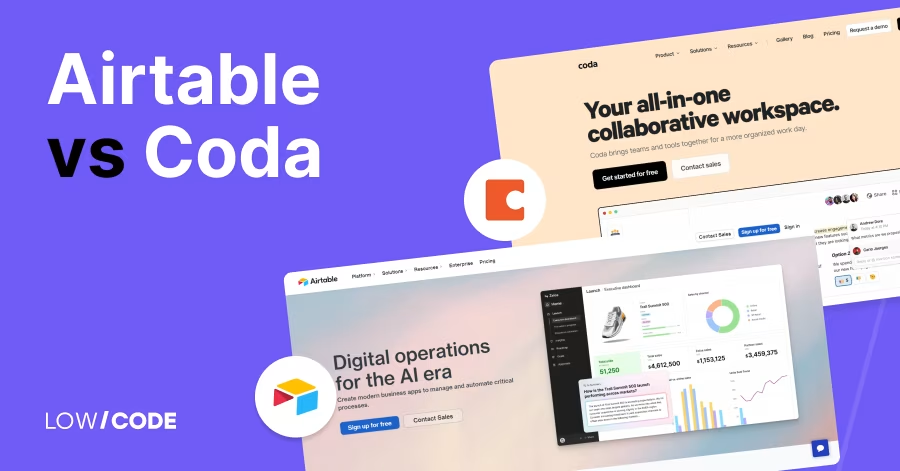FlutterFlow vs Thunkable: 10 Factors to Decide the Best One
11 min
read
Compare FlutterFlow vs Thunkable across 10 key factors like design, logic, scalability, and publishing to choose the right no-code app builder for your goals

You don’t need to write code to build a powerful mobile app in 2025, but you do need the right platform.
FlutterFlow, built on Google’s Flutter framework, has over 1 million users and is trusted by developers and startups for building scalable, high-performance apps. It offers full control over UI, logic, and integrations.
Thunkable focuses on simplicity, using drag-and-drop components and block logic to help non-technical users create functional apps quickly.
So which platform actually fits your goals—FlutterFlow’s power and flexibility, or Thunkable’s speed and simplicity?
In this guide, we compare FlutterFlow vs Thunkable across 10 essential factors including design freedom, app logic, performance, data integration, and publishing options.
Quick Comparison Table - FlutterFlow vs. Thunkable
1. What’s the core difference between FlutterFlow and Thunkable?
The core difference between FlutterFlow and Thunkable lies in their tech stack and target use cases.
FlutterFlow is built on Google’s Flutter framework and is ideal for creating high-performance, visually polished mobile apps for both Android and iOS. It’s best suited for developers and tech-savvy founders who want to build scalable, near-native apps with access to custom code, Firebase integration, and API connectivity.
Thunkable, on the other hand, uses a drag-and-drop builder that’s more beginner-friendly and doesn’t require prior coding knowledge. It’s designed for simple to moderately complex mobile apps and is perfect for educators, startups, or non-technical creators.
In short: FlutterFlow offers more power and flexibility for custom, production-ready apps, while Thunkable focuses on speed, ease of use, and accessibility for non-coders. Your choice depends on how much control and complexity your app needs.
2. Use Case Suitability
Both platforms serve different types of users. Let’s look at which one fits your goals better.
Is FlutterFlow better for building scalable mobile apps?
Yes, FlutterFlow is better suited for building scalable, production-ready mobile apps. It uses Google’s Flutter framework, which compiles to native code, resulting in fast performance across both Android and iOS. You can connect to APIs, use Firebase, add animations, and even insert custom Dart code when needed.
This makes it ideal for developers, startups, and tech-savvy founders looking to launch polished apps with growth in mind. If your goal is to build a full-featured mobile app that can scale with users and complexity, FlutterFlow is the stronger choice.
Is Thunkable good for prototypes and simple apps?
Thunkable is a great choice for building quick prototypes, MVPs, and simple mobile apps without writing any code. Its drag-and-drop interface is beginner-friendly, making it ideal for students, hobbyists, and non-technical founders. You can create functional apps with features like forms, navigation, and native components, then publish directly to Android and iOS.
However, it may feel limited for complex apps that require heavy backend logic or custom UI control. Thunkable works best when speed, simplicity, and accessibility are more important than advanced technical flexibility.
Read more about:
3. Ease of Use
If you're not a developer, ease of use is often the deciding factor. Here's how FlutterFlow and Thunkable compare for non-coders.
How easy is it to use FlutterFlow without coding?
FlutterFlow offers a visual builder with drag-and-drop components, but it’s more advanced than beginner-focused platforms. You don’t need to write code to build functional apps, but understanding concepts like UI structure, API connections, and Firebase setup is important.
While it’s easier than coding from scratch, there’s a learning curve—especially if you want to build complex features. FlutterFlow is best for tech-savvy users or developers who want speed without giving up flexibility. It’s not built purely for beginners but offers powerful tools once you get the hang of it.
Is Thunkable suitable for non-technical users?
Yes, Thunkable is built specifically for non-technical users. Its drag-and-drop interface and block-based logic system make it easy to create apps without writing a single line of code. The learning curve is low, and even beginners can build working mobile apps in hours.
It includes guided tutorials and templates to help you get started quickly. While you won’t have the same level of control as with more developer-focused platforms, Thunkable is ideal for users who want to launch a basic app fast with minimal effort or tech experience.
4. Design Flexibility
If your app needs to look sharp and feel polished, design flexibility becomes a key factor. Here's how each platform handles UI control.
Can you build pixel-perfect UIs in FlutterFlow?
Yes, FlutterFlow allows for pixel-perfect UI design. Since it's built on Google’s Flutter framework, you get fine control over layout, spacing, fonts, colors, and animations. You can create custom components, manage widget states, and preview in real time across devices.
FlutterFlow also supports advanced features like responsive design, conditional visibility, and theming. For designers or developers who want to match their app's look exactly to a brand or UI prototype, FlutterFlow is a powerful option. It’s built for production-ready apps where UI precision matters.
How much design control do you get in Thunkable?
Thunkable provides enough design tools for simple and clean layouts, but it’s not ideal for detailed customization. You can choose from basic components, arrange them visually, and adjust properties like size, color, and alignment. However, complex layouts, fine-tuned responsiveness, or animations are limited compared to tools like FlutterFlow.
It’s great for building functional apps fast, but you won’t get full creative freedom for custom UI design. If your app needs a highly branded or polished look, Thunkable may feel restrictive. It's best suited for practical, straightforward interfaces.
5. Workflow and Logic Customization
The ability to control how your app behaves is just as important as how it looks. Here's how each platform handles logic and workflows.
How does FlutterFlow handle app logic and workflows?
FlutterFlow offers a robust visual workflow editor that allows you to build complex logic without writing code. You can define actions based on user input, navigation events, or database updates. It supports conditionals, loops, local and global variables, and API calls.
For more advanced use cases, you can insert custom Dart code blocks. This gives developers and tech-savvy users a lot of flexibility to create dynamic behavior across screens. Whether it’s onboarding flows, form validation, or real-time updates, FlutterFlow provides the tools needed to manage app logic visually and efficiently.
Can you build complex logic flows in Thunkable?
Thunkable uses a block-based logic system that is easy to understand and great for beginners. You can set up conditionals, loops, variables, and basic data manipulation without writing any code. It’s effective for simple to moderately complex workflows like form handling, navigation, or basic API calls.
However, when you need advanced logic involving custom calculations, deep integrations, or real-time dynamic responses, Thunkable can feel limiting. It’s best suited for straightforward app behavior, not for highly interactive or logic-heavy applications that require deeper customization.
Read more about:
6. Data Integration
Connecting your app to external data sources is crucial for dynamic functionality. Here's how FlutterFlow and Thunkable handle data integration.
What database and API integrations does FlutterFlow support?
FlutterFlow offers robust data integration capabilities, primarily through seamless connections with Firebase and Supabase for backend services. It also allows integration with custom RESTful APIs, enabling developers to connect to various external services.
Additionally, FlutterFlow supports third-party services like Stripe for payments and Google Maps for location services. For more advanced integrations, tools like APIxFlow can be utilized to connect with databases such as MySQL and MongoDB, enhancing the app's data handling capabilities.
Can you connect Airtable, Firebase, or APIs in Thunkable?
Yes, Thunkable provides flexible options for data integration. It supports connections to Airtable via OAuth, allowing for real-time data synchronization within your app. Firebase integration is also available, enabling the use of Firebase Realtime Database by supplying the necessary API key and database URL in the project settings.
Additionally, Thunkable's Web API component allows for integration with various RESTful APIs, facilitating connections to a wide range of external services. This makes Thunkable suitable for building apps that require dynamic data interactions without extensive coding.
7. Scalability and Performance
As your app grows, it needs to handle more users and complex data smoothly. Let’s see how FlutterFlow and Thunkable perform at scale.
Can FlutterFlow apps scale to production-level usage?
Yes, FlutterFlow apps can scale to production-level usage, especially since they are built on the Flutter framework, which compiles to high-performance native code. Apps built with FlutterFlow can integrate with scalable backends like Firebase or Supabase, making it suitable for user-heavy applications.
You also have the option to export code for full control and further optimization. Many startups use FlutterFlow to launch MVPs that evolve into production apps. However, performance depends on how well the app is structured, and some advanced optimizations may require developer involvement.
Is Thunkable reliable for performance in larger apps?
Thunkable is designed for simplicity and quick app development, but it’s not ideal for large-scale or highly complex applications. While it handles small to medium-sized apps well, performance can slow down with complex logic, heavy data use, or too many screens.
Since it runs on a web-based layer and doesn’t compile to full native code, it may not match the speed of native or Flutter-based apps. Thunkable is best suited for lightweight apps, prototypes, or internal tools rather than enterprise-scale mobile applications.
Read more about:
8. Deployment Options
Getting your app into users’ hands is the final step. Here’s how FlutterFlow and Thunkable handle deployment and publishing.
Can you export and publish FlutterFlow apps to app stores?
Yes, FlutterFlow allows you to export your app’s source code and publish it directly to both the Google Play Store and Apple App Store. You can download the complete Flutter code or deploy using FlutterFlow’s built-in one-click publishing with Firebase integration.
This flexibility is great for developers who want full control over the deployment process or plan to scale their app further. FlutterFlow also supports web app deployment and PWA (Progressive Web App) conversion. It’s a production-ready platform that fits well into a professional mobile app release workflow.
Does Thunkable support Android and iOS publishing?
Yes, Thunkable makes it easy to publish your app to both Android and iOS platforms. You can generate Android APKs directly or use the iOS build feature to submit apps through your Apple Developer account. The process is beginner-friendly and includes guides for first-time publishers.
Thunkable also supports live testing on real devices and offers a web app preview. However, you don’t get access to the app’s source code, which limits flexibility post-deployment. It’s ideal for users who want a quick and guided publishing experience without dealing with technical build tools.
9. Limitations of Each Platform
Every platform has trade-offs. Knowing their limitations helps you choose the one that fits your goals better.
What are the drawbacks of using FlutterFlow?
FlutterFlow is powerful, but it has some limitations. While it reduces coding, advanced features often require custom Dart code, which may be challenging for non-developers. The learning curve is steeper compared to beginner platforms, especially when working with APIs or complex UI states.
Real-time collaboration features are limited, and while you can export code, managing the full app lifecycle outside the platform may require developer support. Additionally, performance relies on how well your app is structured. FlutterFlow is ideal for serious app projects but may feel overwhelming for first-time builders.
What are the limitations of Thunkable?
Thunkable is beginner-friendly, but it comes with feature limits. Customization options are basic, and complex layouts or animations are hard to achieve. It lacks access to native code and doesn’t support full code export, which means you’re tied to the platform for future updates.
Performance may slow down with complex logic or larger apps, and backend integrations are more limited than in advanced platforms. Thunkable works well for simple apps, MVPs, or learning projects, but may not scale for high-performance or design-intensive applications.
Read more about:
10. When to Choose Each Tool
Choosing the right platform depends on your app’s goals, complexity, and your technical background. Here’s when each one makes the most sense.
When should you use FlutterFlow instead of Thunkable?
Choose FlutterFlow when you’re building a professional-grade mobile app with custom UI, complex logic, or plans to scale. It’s ideal for startups, agencies, or developers who want design flexibility and access to production-ready Flutter code. If you plan to integrate APIs, use Firebase, or fine-tune performance, FlutterFlow provides the tools you need.
While it’s more technical, it gives you long-term control and the ability to grow your app beyond an MVP. FlutterFlow is best for serious projects that require polish, flexibility, and scalability from day one.
When is Thunkable a better choice than FlutterFlow?
Thunkable is a better fit when speed, simplicity, and ease of use are your top priorities. If you’re a beginner, educator, or non-technical founder building a prototype or lightweight app, Thunkable’s drag-and-drop builder and block-based logic make it easy to bring ideas to life.
You don’t need to write code or manage complex systems. It’s great for launching simple apps quickly, learning app development, or testing early-stage ideas. If your project doesn’t require deep customization or heavy integrations, Thunkable helps you build and publish faster with less effort.
Created on
May 23, 2025
. Last updated on
July 7, 2025
.

FAQs
Can you build real apps with FlutterFlow and Thunkable?
Which is better for publishing to both iOS and Android?
Does FlutterFlow require coding knowledge?
Is Thunkable enough for MVP development?
Can you switch from Thunkable to FlutterFlow later?







%20(Custom).avif)







.avif)
